New Delhi: Recently, a Manipuri woman was spat at by a passer-by in Vijay Nagar, and was racially abused as “corona”. After much condemnation from various students’ associations from Northeast India, the Delhi Police arrested the man responsible for the attack on March 24, 2020.
This isn’t the first time that the migrants from Northeast India have been at the receiving end of racist attacks. However, what is new is them being likened to the citizens of a completely different country (China) and then consequently to a life-threatening pandemic. The rise of these events therefore raises the need to rethink how we read, write and talk about race relations in metropolitan India.
As a research student, I have been trying to understand what it means to be a migrant student, worker or resident from the different states and to be a member of the diverse ethno-linguistic groups of Northeast India in Delhi.
In a way, it is evident that there is a need to understand how people from the Northeast seek to identify themselves and how they interpret these incidents in their daily lives in Delhi vis-à-vis the people who do not resemble them physically and who hail from other parts of the country.
They may not only identify as a Northeastern Indian. They may also identify specifically as a Tangkhul from Manipur, a Reang from Tripura, a Dimasa from Assam, a Ralte from Mizoram, a Hmar from any of the tri-state area of Assam, Manipur and Mizoram, a Jaintia from Meghalaya, a Galo from Arunachal, a Angami Naga from Nagaland, a Lepcha from Sikkim among innumerable others.
Also read: Of COVID-19, Double Identities and the Alienation of Northeast Indians
In many cases, they may even choose to prioritise their ethnic identities over their state or national identities while living Delhi by actively working with student associations or being an active member of their community church that represent their ethnic community back home. This is a choice that they ideally should have. But in reality, this choice ceases to exist when they are automatically identified as coronavirus or as a ‘chinki’ (a racist slur used against Northeast citizens) from Northeast India in Delhi. The usage of the term Northeast to refer to the migrants from the communities and states of the region has to be critiqued, now. There are multiple layers of identities at work here, which have to be peeled one at a time.
The spate of racist attacks may be explained to a certain extent not only by this overlapping of their distinct ethnic and linguistic identities but also simply by not knowing who they are, how they specifically identify themselves or where they come from.
Owing to COVID-19, there has been a mass migration of the migrant students and workers from the Northeast back to their respective states. The ones remaining have to not only physically distance and take precautions to protect themselves from COVID 19 but also have to fight the double battle of resisting racist attacks as well.
This brings me to an observation that within urban spaces like Delhi, it is not always about othering or being excluded but of imagining them in a particular way and during the times of this pandemic, this is how they are imagined: “as COVID 19 spreading Chinese”. The task to break out of this form of imagination henceforth becomes extremely daunting.
Unfortunately, this power to imagine them lies with the ones who possess an ‘Indian face’: a unidirectional exercise of power. The problem I feel is that they are never imagined as unique individuals who have distinct ethnic, linguistic, religious identities along with diverse sexual orientations.
I asked some of the students from the different states and ethnic communities of Northeast India who are currently studying in Delhi to write something about these incidents briefly on a piece of paper and share it with me.
I hope that the messages help us understand that they are not only racialised subjects but have different layers of identities and also challenge the peripheral position they are always relegated to.

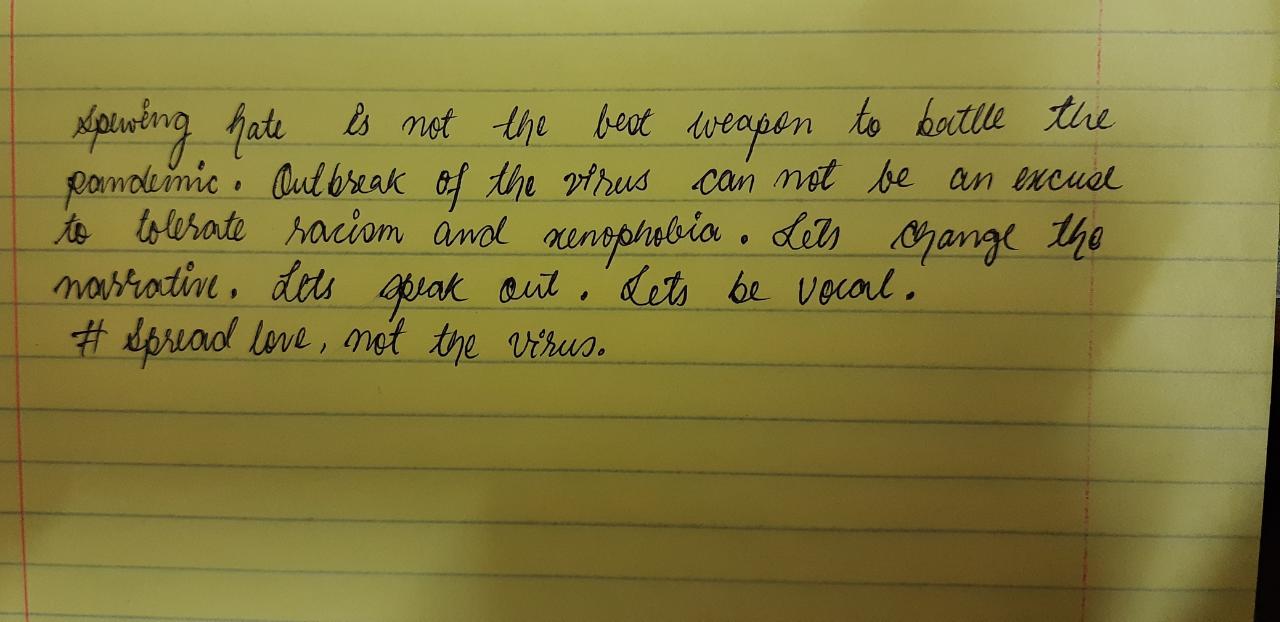

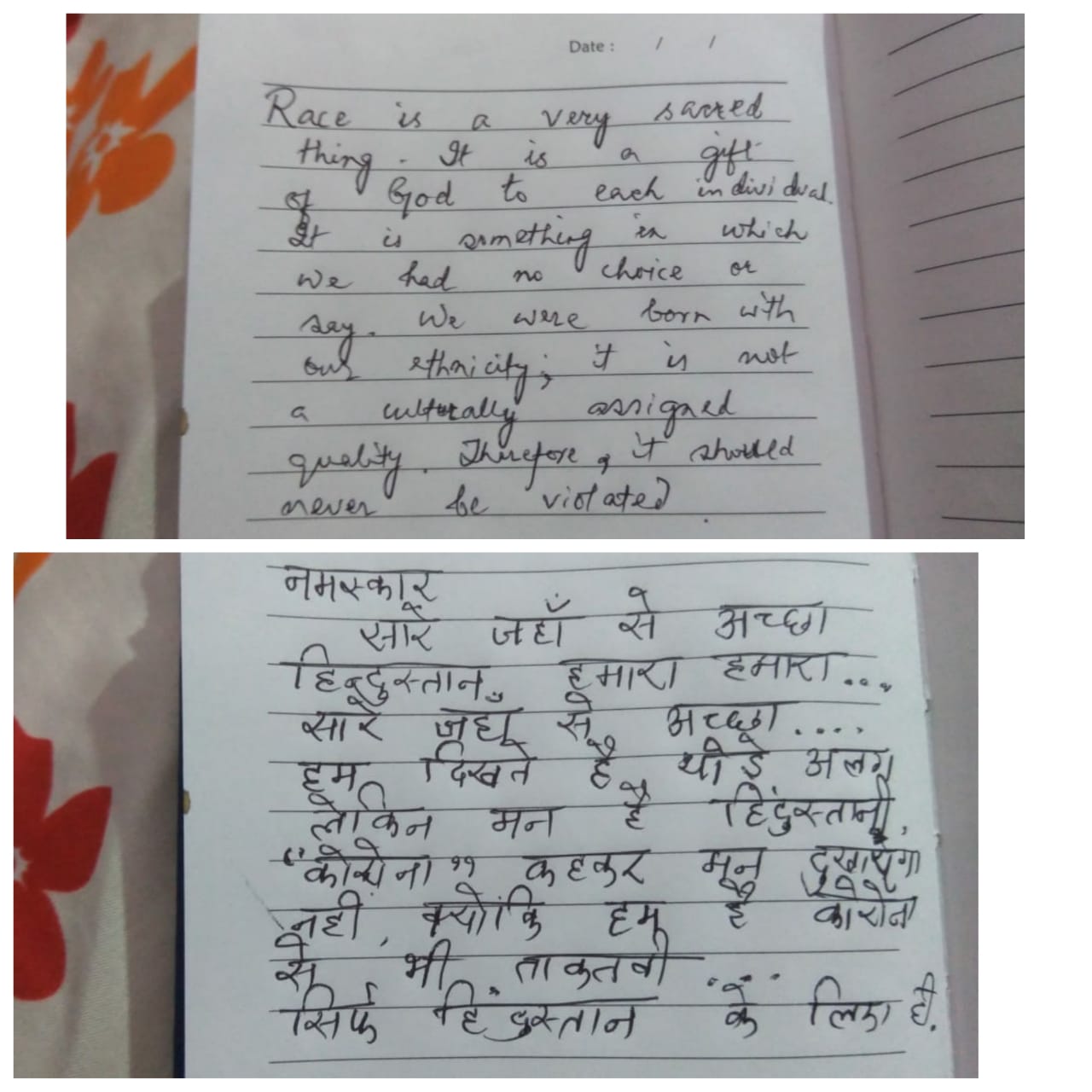


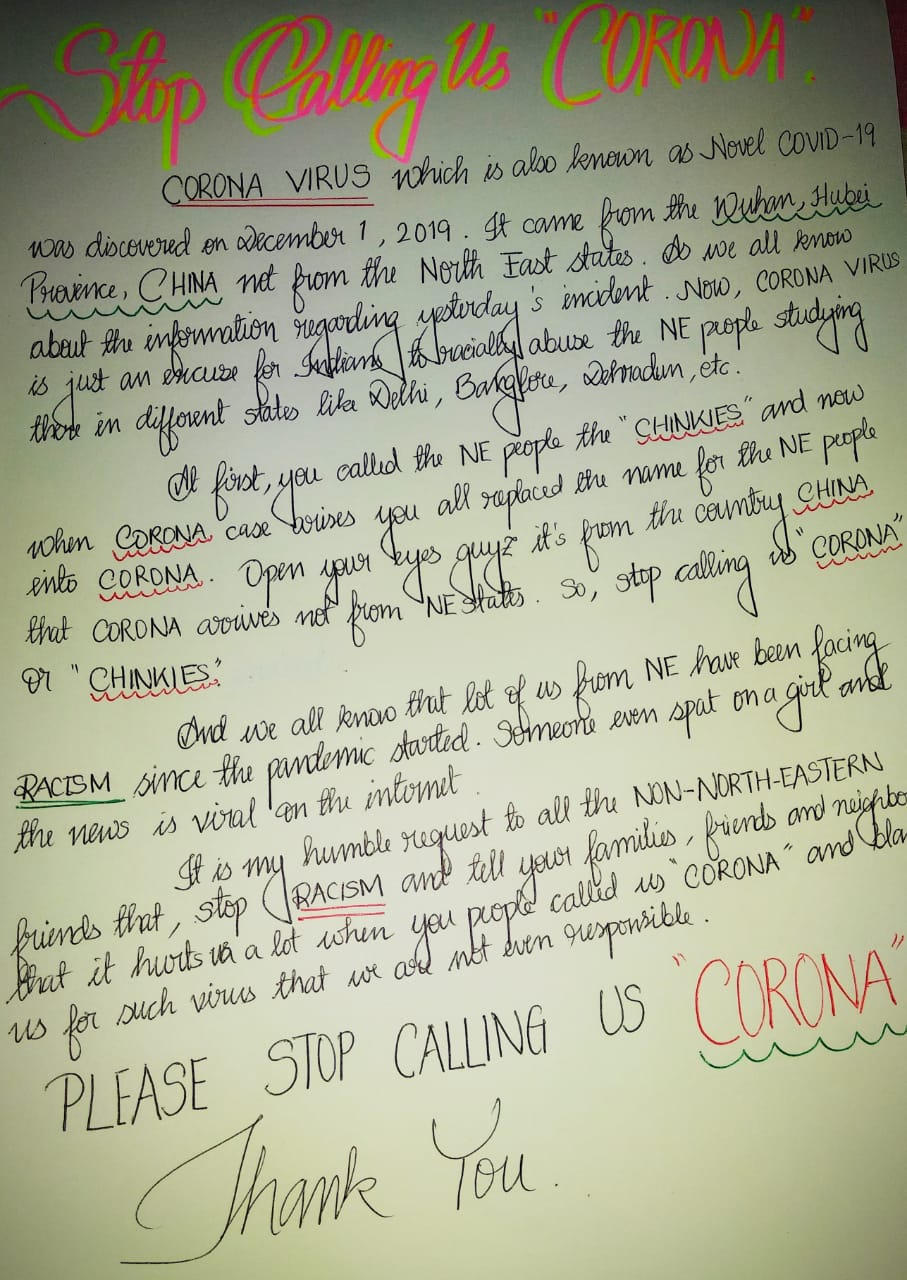
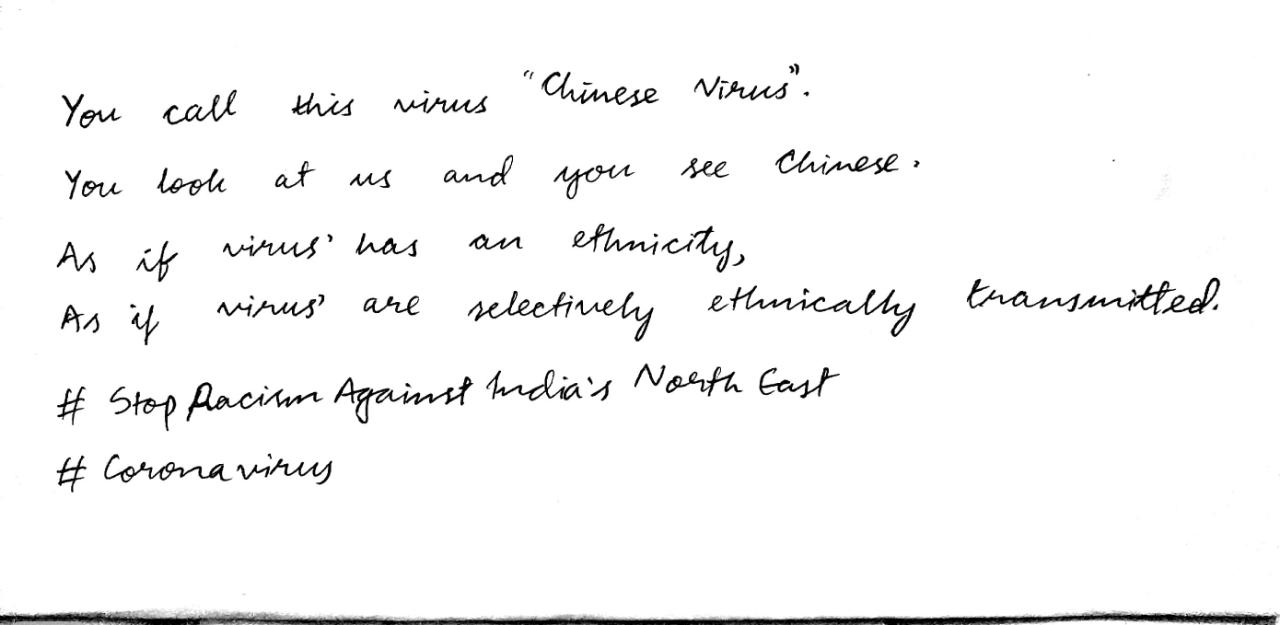

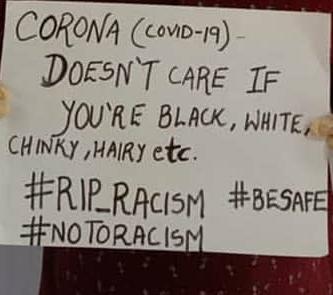
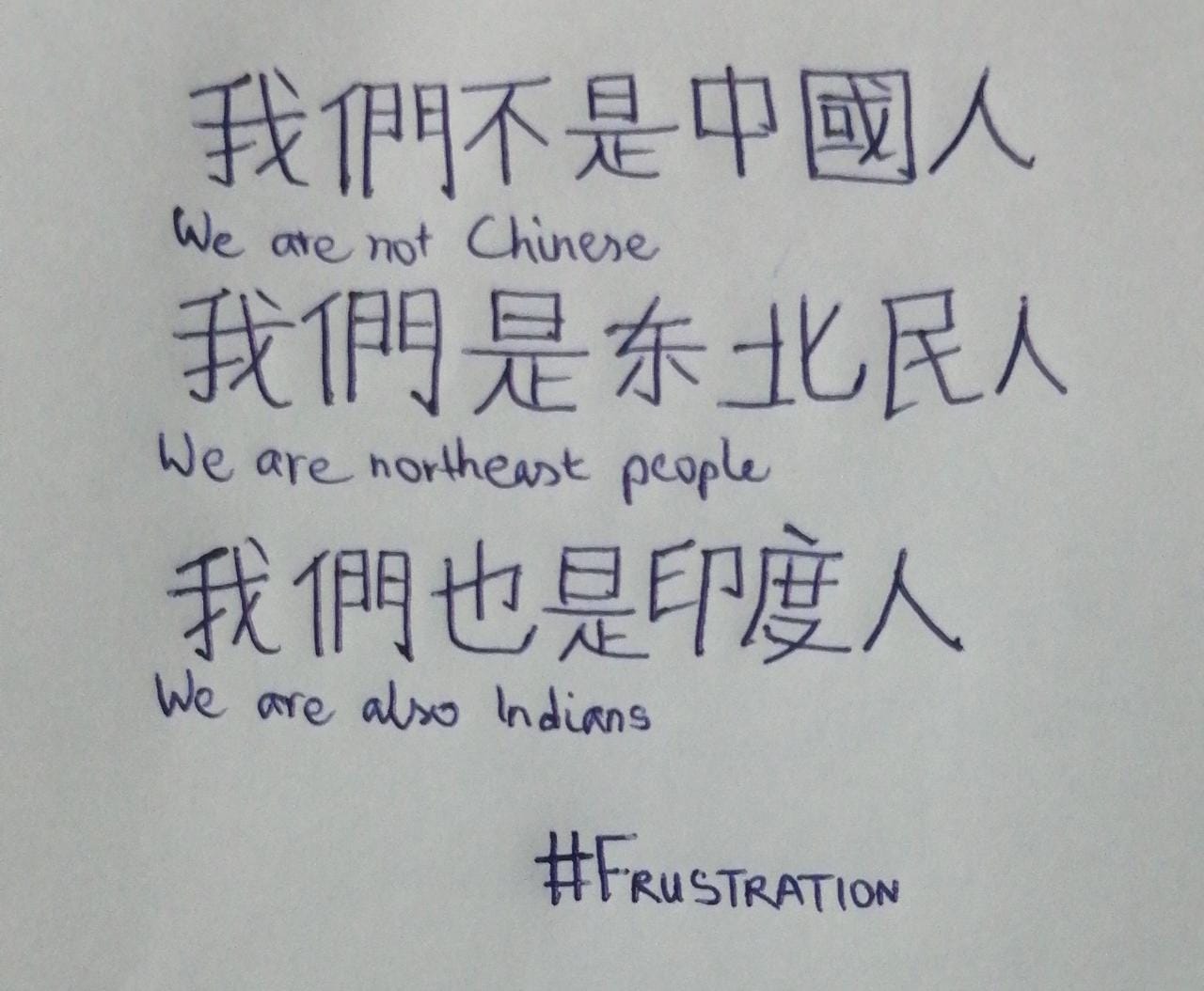
Shivangi Kaushik is a PhD student from Oxford who has been trying to understand the experiences of the migrant students and workers from the different states and different ethnic communities of Northeast India. She can be reached at shivangi.kaushik100@gmail.com
